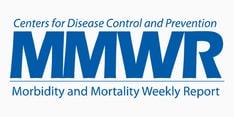TOPLINE:
Patients with opioid use disorder (OUD) discharged from emergency departments (EDs) with to-go buprenorphine packs demonstrated improved adherence to withdrawal therapy, ensuring continued care for these individuals.
METHODOLOGY:
- Researchers performed a retrospective analysis of adult patients discharged with to-go buprenorphine packs from one of the 10 EDs within a major health system between August 1, 2023 to May 30, 2023.
- To-go buprenorphine packs contained six buprenorphine/naloxone 8-2 mg films or tablets and were provided to ED patients upon discharge with an offer to counsel.
- The primary outcomes were the number of follow-up ED visits and prescription fill history of buprenorphine from the state monitoring program within 30 days of ED discharge.
- Of the 124 patients evaluated, 43 (34.7%) received buprenorphine for the first time, while 81 (65.3%) had a history of buprenorphine use either as prescription or to-go.
- Within 30 days of ED visits, 61.3% of the patients had filled in their buprenorphine prescription and 32.3% had returned to an ED for other reasons such as opioid withdrawal and non-OUD.
- A higher number of patients (79%) who filled buprenorphine within 30 days before an ED visit went on to refill in the next 30 days, compared to those (54%) who missed their initial prescription fill.
The authors noted, "One third of patients were induced on buprenorphine for the first time, highlighting the significant role the ED can have in the management of patients with OUD," emphasizing the role of ED as the first-line of care for patients with OUD.
SOURCE:
This study was led by David E. Zimmerman, PharmD, Emergency Medicine Clinical Specialist at the University of Pittsburgh Medical Center, Mercy Hospital and published online on December 20, 2023, in the American Journal of Emergency Medicine.
LIMITATIONS:
- The study involved a small number of patients and retrospective study design.
- The 30-day cutoff for return to ED and the limitation of only state data may add to miscalculation.
DISCLOSURES:
The study investigators did not receive any funding from public, commercial, or nonprofit agencies. David E. Zimmerman reported receiving grant funding from ADMA Biologics for a project unrelated to the current study.




Comments